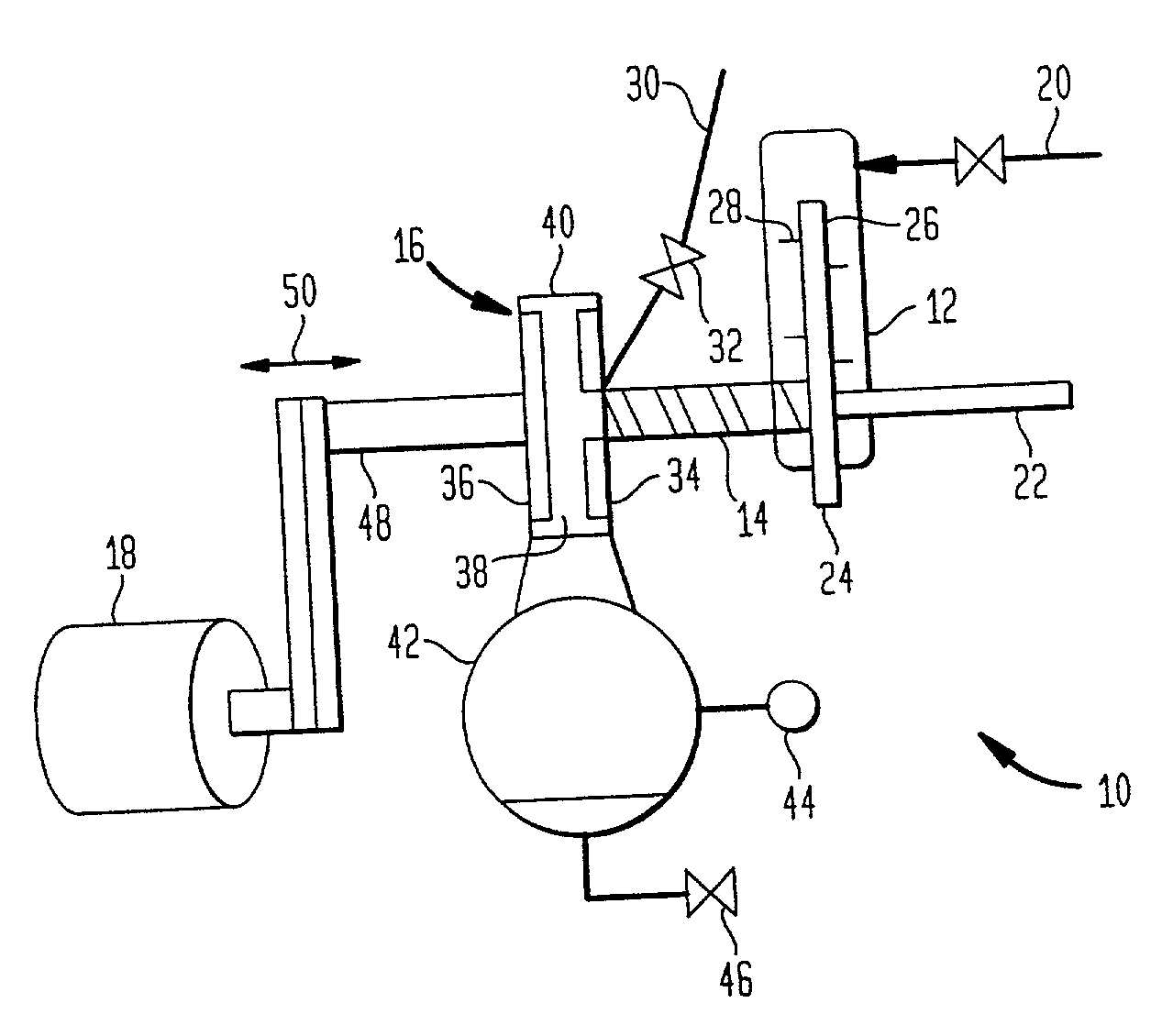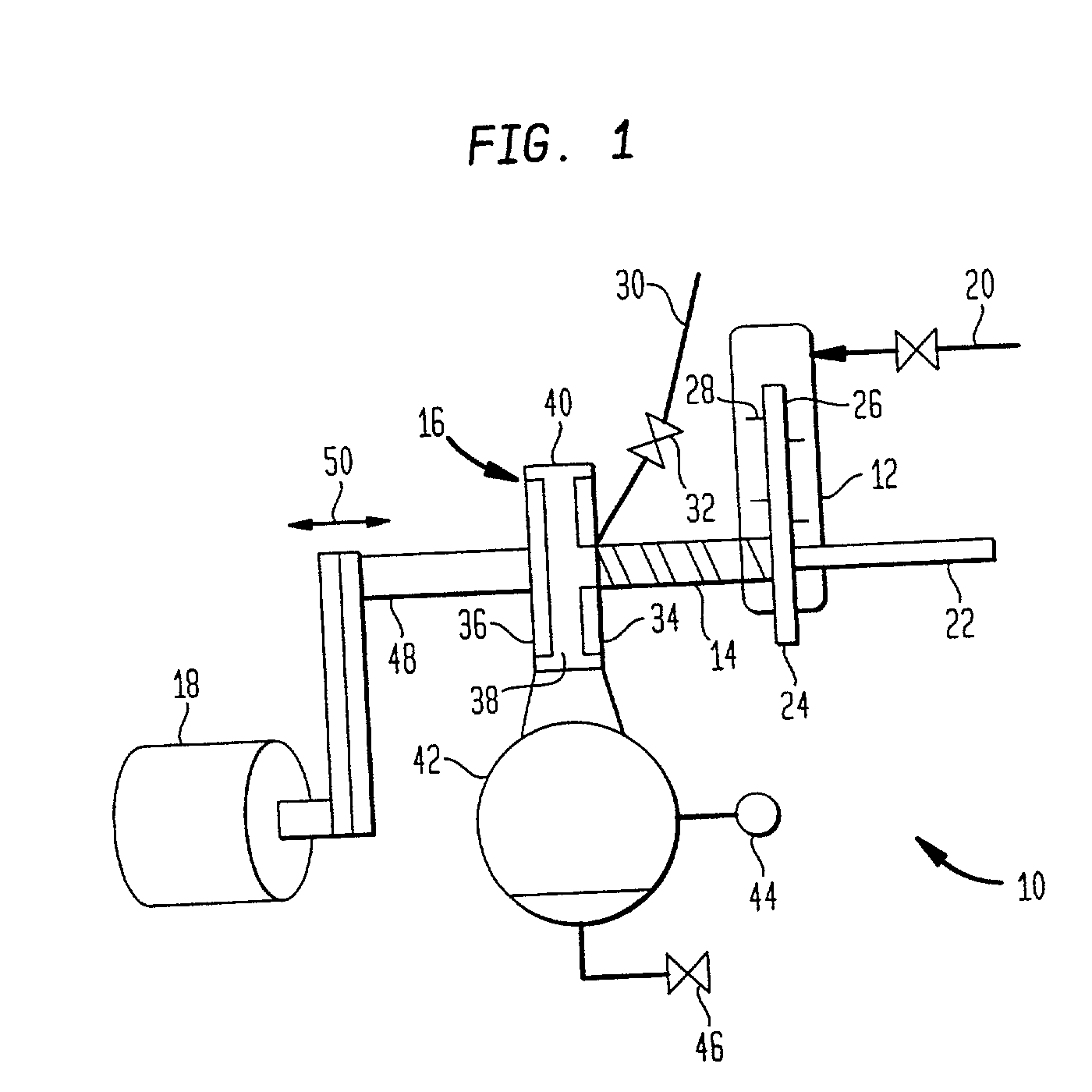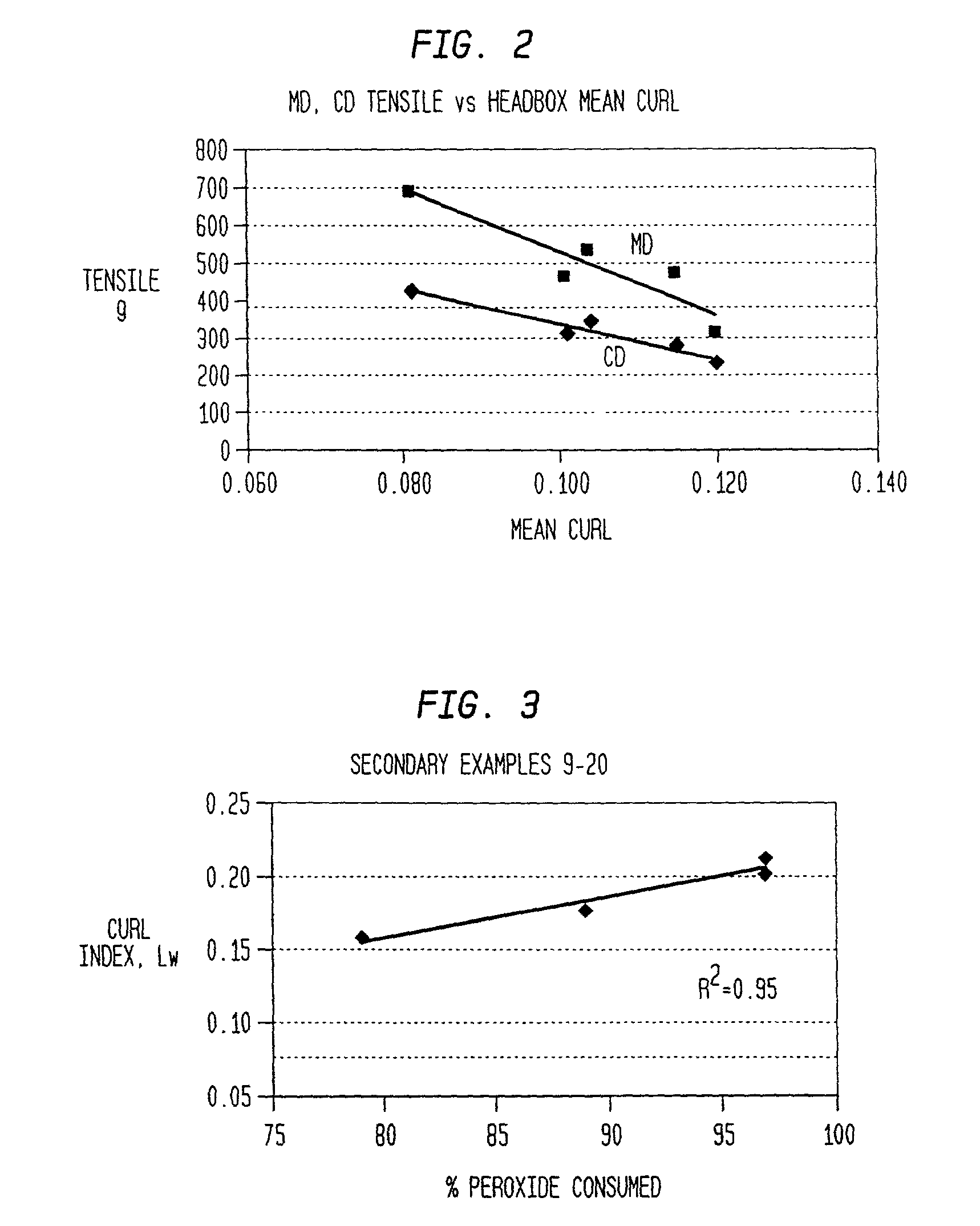Method of bleaching and providing papermaking fibers with durable curl
a technology of durable curl and papermaking fibers, which is applied in the field of providing durable curl to papermaking fibers, can solve the problems of loss of most of the curl in both high consistency refined mechanical and high yield sulfite pulp, burn under interfiber friction, and reduce the production cost of papermaking. , the effect of reducing the capital cost of pressing equipmen
- Summary
- Abstract
- Description
- Claims
- Application Information
AI Technical Summary
Benefits of technology
Problems solved by technology
Method used
Image
Examples
examples 9-25
[0084] A sample of paper was acquired for the next set of tests. The paper was wetted to 35% consistency and run through a lab pilot pulp breaker before use in the refiner. Runs 9 to 19 and the production runs of Examples 20-25 performed with this sample. During these runs it was discovered that the measured curl in the fiber was related to the bleaching performance in the refiner. Again, these runs were performed with a large gap and low power application in the refiner. The positive impact of bleaching in the refiner on curl was carried through subsequent hydrosulfite bleaching and a variety of retention conditions. The examples demonstrated that a significant amount of the curl was preserved through the storage and repulping / paper making process. This curl generated a tissue sheet of increased caliper and Porofil while reducing the tensile strength.
examples 26-35
[0085] Runs 26-35 were performed with BCTMP and virgin hardwood and softwood. All of these runs, except one, were performed without chemicals. The curl response of the pulps varied somewhat; the Western pulp having little curl induced while the Softwood has a high induced curl.
[0086] Results of the bleaching trials appears in Tables 1 through 8 below. Weight %, or % OP is expressed as a percentage of dry pulp unless otherwise indicated. In Tables 1-8 "run time" refers to the length of time a batch of material is fed to the refining portion of the apparatus of FIG. 1; whereas "residence time" refers to the length of time a batch is maintained in vessel 42 at temperature and pressure. "Hydrosulfite" GE Brightness and like terminology refers to Brightness for examples where the pulp was bleached and curled in accordance with the present invention and then hydrosulfite bleached by conventional means.
1TABLE 1 Examples 1-8 Operating Conditions and Refiner Operation Brightness Cons Pulp Fl...
PUM
| Property | Measurement | Unit |
|---|---|---|
| temperature | aaaaa | aaaaa |
| pressure | aaaaa | aaaaa |
| pressure | aaaaa | aaaaa |
Abstract
Description
Claims
Application Information
 Login to View More
Login to View More - R&D
- Intellectual Property
- Life Sciences
- Materials
- Tech Scout
- Unparalleled Data Quality
- Higher Quality Content
- 60% Fewer Hallucinations
Browse by: Latest US Patents, China's latest patents, Technical Efficacy Thesaurus, Application Domain, Technology Topic, Popular Technical Reports.
© 2025 PatSnap. All rights reserved.Legal|Privacy policy|Modern Slavery Act Transparency Statement|Sitemap|About US| Contact US: help@patsnap.com



